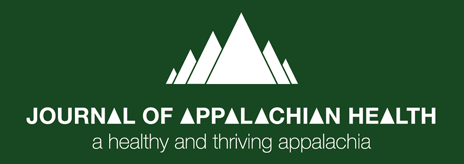Telehealth has become a path to provide safe, efficient, and accessible dental care during the COVID-19 pandemic. A survey of nearly 3,000 dentists conducted by the DentaQuest Partnership reveals that the oral health care system is ready to implement teledentistry as a viable tool to deliver preventative care, not only during the pandemic, but long-term. The results can be narrowed down by teledentistry usage type, state, financial considerations, and opportunities for growth.
Journal of Appalachian Health: Volume 2, Issue 4 Available NOW!

Commentary
Rural Community Toolbox to Help Battle Opioid Epidemic, Liz Carey
Advancing Cancer Prevention Practice Facilitation Work in Rural Primary Care During COVID-19, Dannell Boatman, Susan Eason, Mary E. Conn, Summer Miller, & Stephenie Kennedy-Rea
COVID-19 and Opioid Use in Appalachian Kentucky: Challenges and Silver Linings, Rachel Vickers-Smith, Hannah L.F. Cooper, & April M. Young
Research Articles
Improving Access to Treatment for Opioid Use Disorder in High-Need Areas: The Role of HRSA Health Centers, Michael Topmiller, Jennifer Rankin, Jessica L. McCann, Jene Grandmont, David Grolling, Mark Carrozza, Hank Hoang, Josh Bolton, & Alek Sripipatana
In Their Own Words: How Opioids Have Impacted the Lives of “Everyday” People Living in Appalachia , Patricia Nola Eugene Roberson, Gina Cortez, Laura H. Trull, & Katherine Allison Lenger
Qualitative Analysis of Maternal Barriers and Perceptions to Participation in a Federal Supplemental Nutrition Program in Rural Appalachian North Carolina , Sydeena E. Isaacs, Lenka H. Shriver, & Lauren Haldeman
Leveraging Electronic Health Records Data for Enhanced Colorectal Cancer Screening Efforts, Adam D. Baus, Lauren E. Wright, Stephenie Kennedy-Rea, Mary E. Conn, Susan Eason, Dannell Boatman, Cecil Pollard, Andrea Calkins, & Divya Gadde
Review & Special Articles
The Landscape of Connected Cancer Symptom Management in Rural America: A Narrative Review of Opportunities for Launching Connected Health Interventions , Ming-Yuan Chih, Anna McCowan, Sadie Whittaker, Melinda Krakow, David K. Ahern, Eliah Aronoff-Spencer, Bradford W. Hesse, Timothy W. Mullett, & Robin C. Vanderpool
Media Reviews & Reports
Review of: From the Front Lines of the Appalachian Addiction Crisis Healthcare Providers Discuss Opioids, Meth and Recovery , Carl G. Leukefeld
Notes from the Field
Rural Appalachia Battling the Intersection of Two Crises: COVID-19 and Substance Use Disorders, Margaret Miller, Rebekah Rollston, Kate E. Beatty, & Michael Melt
Key Policy Challenges and Opportunities to Improve Care for People with Mental Health and Substance Use Disorders
The National Academies of Sciences, Engineering, and Medicine (NAM) recently published, “Key Policy Challenges and Opportunities to Improve Care for People with Mental Health and Substance Use Disorders: Proceedings of a Workshop.” This HRSA-supported report is a product of NAM’s Forum on Mental Health and Substance Use Disorders and describes the presentations and discussions held in October 2019 during the inaugural workshop.
Read the report.
Pennsylvania Rate of Uninsured Children Rises to 4.6 Percent
The Pittsburgh Post-Gazette reported on Nov. 16, that the rate of uninsured children in Pennsylvania rose to 4.6 percent in 2019, representing about 128,000 individuals, according to Pennsylvania Partnerships for Children. The highest uninsured rates were in rural counties, according to the report. Read more.
How Pfizer Plans to Distribute Its Vaccine
Pfizer announced that early analysis showed that their COVID-19 vaccine candidate was more than 90 percent effective. Now Pfizer, government agencies and the public health community are focused on how to make millions of doses of the vaccine and distribute them to the hospitals, clinics and pharmacies where people will receive two separate injections. If the FDA approves the vaccine in the coming weeks, as expected, Pfizer could in theory vaccinate millions of Americans by the end of the year. However, as the New York Times notes, this process hinges on the cooperation of multiple federal, state and local agencies, as well as providers and other stakeholders. The full New York Times article is available here.
Impact of the COVID-19 Pandemic on Outpatient Care
In their fifth report on outpatient health care service utilization during the pandemic, the Commonwealth Fund tracked outpatient visit trends through Oct. 10. The report notes that while utilization has rebounded significantly from earlier in the pandemic, providers continue to face challenges keeping patients and clinicians safe while also maintaining revenue. The report provides charts illustrating that overall visit counts per week have fully rebounded. In total, weekly visit counts now slightly exceed pre-pandemic levels. However, there is considerable variation by patient age, geographic area, clinical specialty and insurance coverage. The full report is available here.
Study Adds New COVID-19 Symptoms
Researchers analyzed nearly 12,000 visits by adult patients to emergency departments at five New York City hospitals. They found COVID-19 in 57.5 percent of patients who went to the hospital because of weakness, falls or altered mental status; 55.5 percent of those who came in because their blood sugar was out of control; and 51.4 percent of patients whose chief complaint was a gastrointestinal problem. Read more.
Making it Work: Models of Success in Rural Maternity Care
Researchers at the University of Minnesota Rural Health Research Center identify common factors and best practices for rural-based obstetrics with a look at what leaders have done at the community level in Wisconsin, Kansas, and Arkansas. Read more here.
Fed Survey Shows Conditions Worsen in Low- to Moderate-Income Communities

As COVID-19 continues to have profound effects on people’s lives, the Federal Reserve Bank of Philadelphia, in partnership with the 11 other Reserve Banks and the Board of Governors of the Federal Reserve System, is surveying representatives of nonprofits, financial institutions, government agencies, and other community organizations to determine the pandemic’s impact on low- to moderate-income (LMI) communities.
Our latest Perspectives from Main Street report summarizes findings from our October survey. The majority of organizations said COVID-19’s impacts on a range of issues — from employment and education to basic consumer needs and health — got modestly or significantly worse since August.
While the Third District state data are not a representative sample, there are several areas where the results vary from or are more pronounced than national indicators in the full report:
- The majority of respondents in the nation (59 percent) and larger majorities of respondents in Pennsylvania (60 percent), New Jersey (69 percent), Delaware (67 percent), report that LMI communities are experiencing significant disruption and expect recovery to be difficult.
- Income and job loss were cited as the top impacts for respondents in the nation (38 percent) and in Pennsylvania (34 percent), New Jersey (45 percent), and Delaware (58 percent).
- The majority of respondents in the nation (56 percent) and in Pennsylvania (60 percent), New Jersey (79 percent), and Delaware (50 percent) report that it will take 12 months for community conditions to return to pre-pandemic levels.
Year-round, the Philadelphia Fed and the the Federal Reserve System work to foster economically resilient communities. Gathering actionable information is especially important during this unprecedented time. We’ll continue to seek and share ongoing perspectives from Main Street.
To learn about Philadelphia Fed’s Community Development and Regional Outreach Department, visit our website.
Research: Food Insecurity Is Worse for Rural Residents During the Pandemic

By Liz Carey
Before the pandemic, more than 2.3 million households in rural communities faced food insecurity. Researchers found it’s getting worse.
Read more
